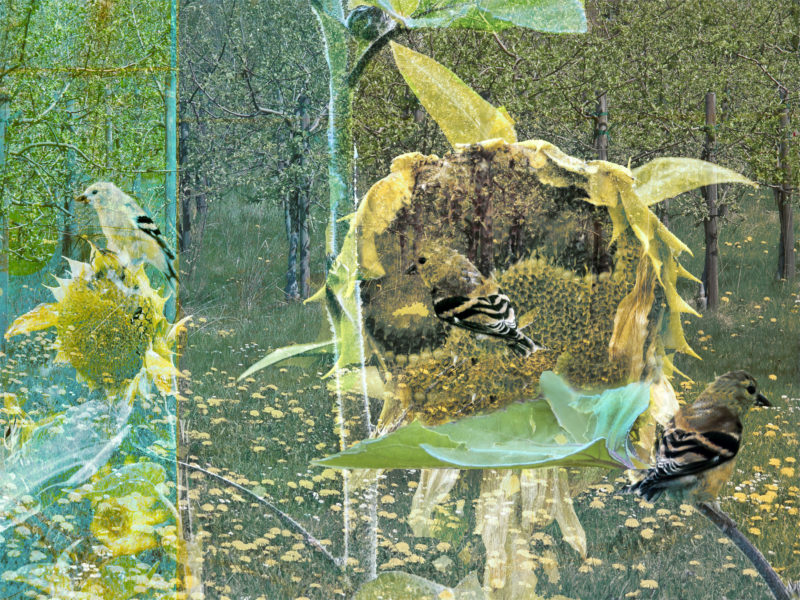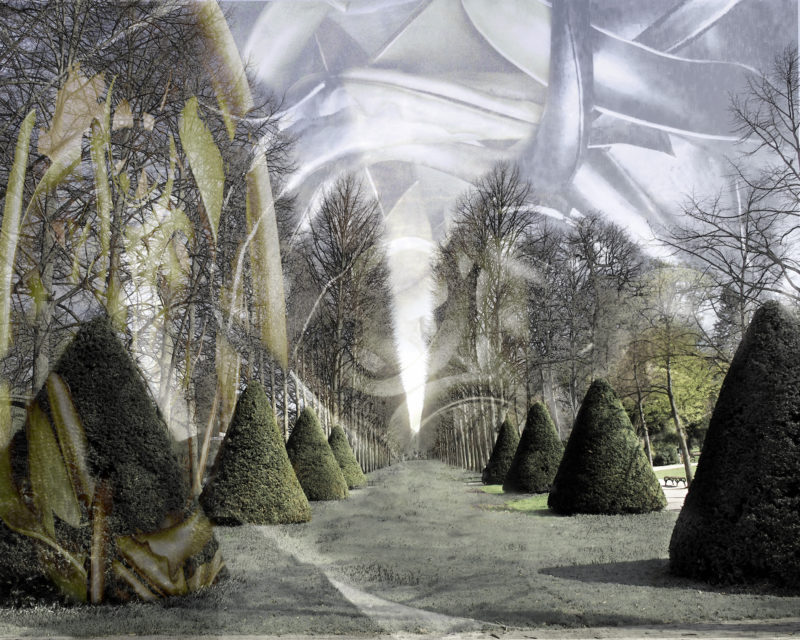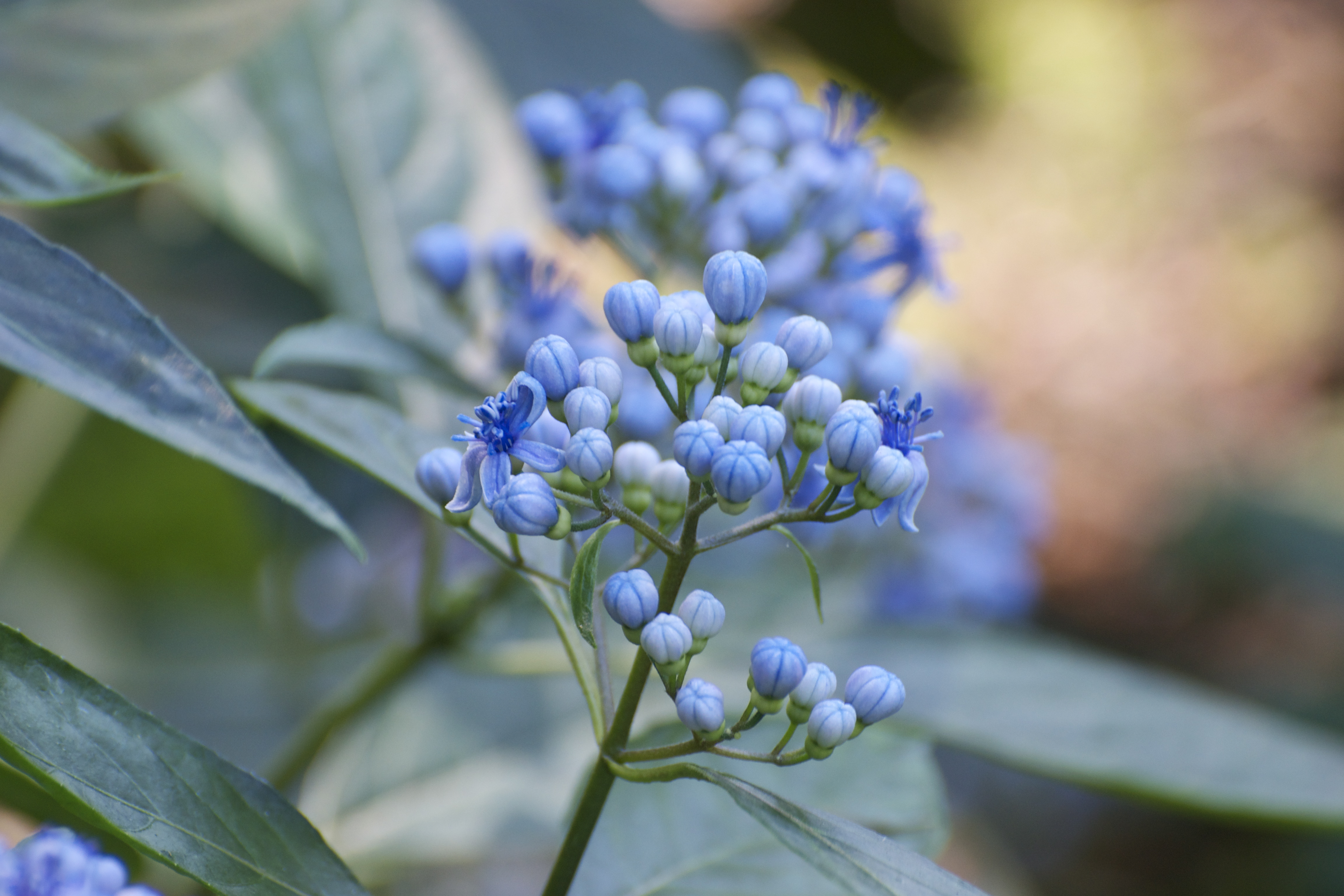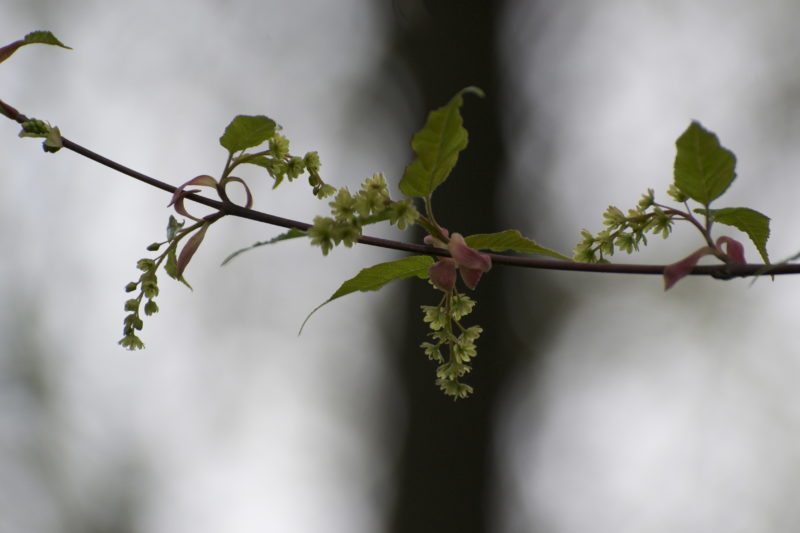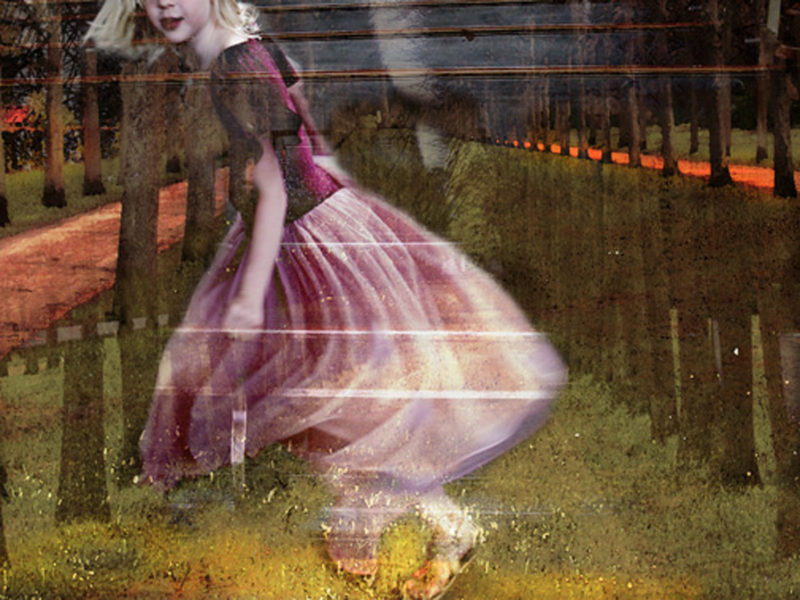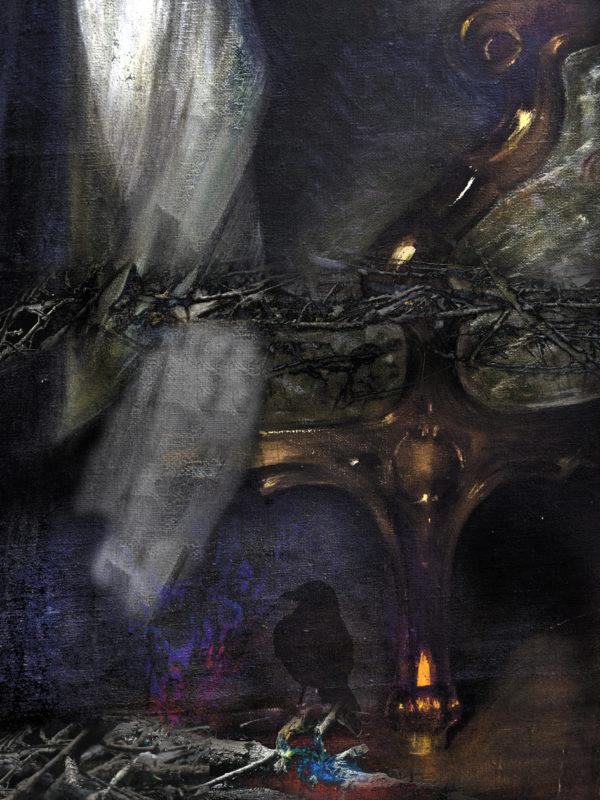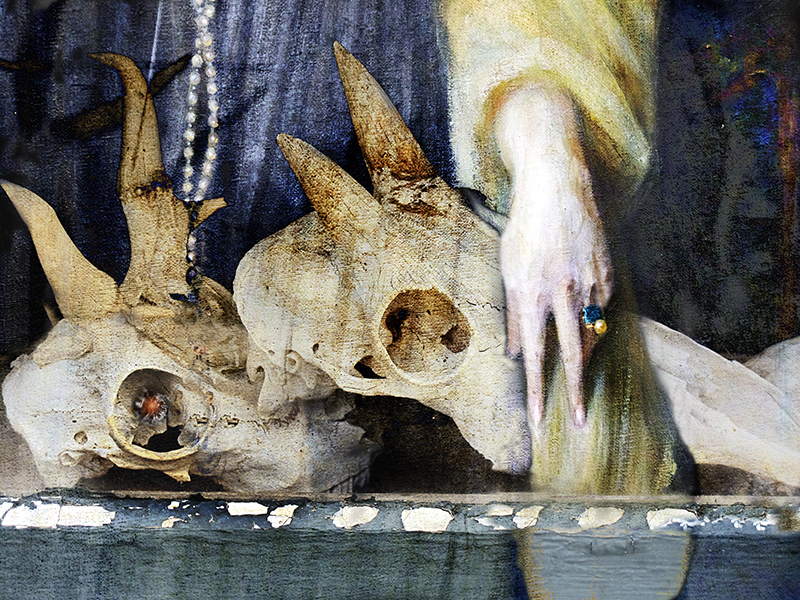Looks like the posts have not been email for some days. Am trying to fix it now. Sorry

I wonder if I had it in me to get up at 3:00 in the morning to be at a concert at 4:30 am. The answer is a resounding NO, unless… the concert took place at a bird sanctuary. And offered music by Messiaen. (Although playing him on the piano was a bear rather than a bird. Ok. Done with the bad puns.)

 Last Sunday the entire grandiose Catalogue of Birds by Messiaen was played across different places in nature during the course of a day into the night. Starting with a walk at dawn to hear the real birds, the concert commenced among the reeds. At night it finished fittingly in a hall, performing the calls of the night owl. Luckily all this happened in England, at the Aldeburgh Festival last week, so I didn’t have to stay up late, which is harder for me than to get up early. Wouldn’t have liked to miss the owl. Unluckily, this seems like an event of a lifetime, organized with British precision, stamina and a sense of adventure, shuttling the audience from one spot to another, an experience I would have relished. The festival director, Pierre-Laurent Aimard, was also the pianist, playing, as you can see in the clip below, with hand warmers in the dawn!
Last Sunday the entire grandiose Catalogue of Birds by Messiaen was played across different places in nature during the course of a day into the night. Starting with a walk at dawn to hear the real birds, the concert commenced among the reeds. At night it finished fittingly in a hall, performing the calls of the night owl. Luckily all this happened in England, at the Aldeburgh Festival last week, so I didn’t have to stay up late, which is harder for me than to get up early. Wouldn’t have liked to miss the owl. Unluckily, this seems like an event of a lifetime, organized with British precision, stamina and a sense of adventure, shuttling the audience from one spot to another, an experience I would have relished. The festival director, Pierre-Laurent Aimard, was also the pianist, playing, as you can see in the clip below, with hand warmers in the dawn!  https://www.youtube.com/watch?v=15xFa2U5thw
https://www.youtube.com/watch?v=15xFa2U5thw
Thirteen individual pieces, each echoing the song of a particular bird from France, comprise this musical work, finished in 1958. From then on, Messiaen traveled all over the world to transcribe songs of birds in the wilderness, including exotic birds, and incorporate the tunes into his compositions. Paul Griffiths observed that “Messiaen was a more conscientious ornithologist than any previous composer, and a more musical observer of birdsong than any previous ornithologist.” Three of my favorite things: music, birds, travel! I wonder if he would have considered taking a photographer.

Here is a glowing review of the entire Aldeburgh event http://www.telegraph.co.uk/music/what-to-listen-to/messaiens-catalogue-of-birds-pierre-laurent-aimard-aldeburgh-fes/ Makes me jealous.

Parks and Poppies
· How politics shape our environments ·

Don’t you love it when a book review leaves no doubt about what to read? For example, Andrea Wulf writes, “Here is my review of Stephen Buchmann’s “The Reason for Flowers” – which is a pretty terrible book. Very rambling and not enjoyable. Shame.” She herself is the justly celebrated author of The Invention of Nature, a fabulous book about the ecological visionary and humanist, Alexander von Humboldt. Ok, ignore one, read the other.
Also on my reserve-at-the-library – list: A Walk in the Park, by social historian Travis Elborough. I read the attached review in the Financial Times and was sold, particularly since the writing was claimed to have a “Monty Python-ish strain.”
http://www.ft.com/intl/cms/s/0/5b07fe36-2bf5-11e6-bf8d-26294ad519fc.html
 According to the review the book traces the history of public parks including their role (in the eye of philanthropic Victorians) to pacify the urban poor. Post WW I park creation was increased to enhance physical fitness in young men, having shown lamentable lack thereof when conscripted earlier. And of course now parks are making way for ever larger number of shopping malls… I find it interesting to learn about what social, political or economic pressures shape environments that we take for granted.
According to the review the book traces the history of public parks including their role (in the eye of philanthropic Victorians) to pacify the urban poor. Post WW I park creation was increased to enhance physical fitness in young men, having shown lamentable lack thereof when conscripted earlier. And of course now parks are making way for ever larger number of shopping malls… I find it interesting to learn about what social, political or economic pressures shape environments that we take for granted.
Take the cultivation of poppies, for example, the plant from which opium and its derivatives are extracted (the German company Bayer started to produce heroin in the late 1800s, sold by the truckload to combat opium addiction in the US until it became clear that it itself was highly addictive.) The review from The Guardian below makes it clear that Julia Lovell’s book Opium War Drugs, Dreams and the Making of China should be quite the eye-opener when it comes to politics and flowers. https://www.theguardian.com/books/2011/sep/02/opium-war-julia-lovell-review

Am I the only one who finds it ironic that the West has declared a war on drugs in the 20th century, when Great Britain and later France declared war twice on China in the 1800s because it tried to prohibit Western nations to sell opium in China? In the 1820s China had up to 10 Million opium smokers and addicts because of the import of opium by the British from Burma in exchange for the coveted Chinese tea. The emperor decided to ban the use of the opium which did not sit well with the sellers. The West was victorious in both wars and extracted hefty concessions from China, both monetary and in terms of ceded land (think Hongkong.) More long lasting, though, is how these wars shaped Chinese nationalism and its underlying structural narrative. It might still come to haunt us.
These days Afghanistan has surpassed Burma in production of opium and participates in a multibillion dollar heroin trade that benefits not just indigent political movements like the Taliban, but also organized crime and a lot of our own financial institutions because of money laundering in Western banks. The numbers about the production are mind boggling and can be found here http://www.unodc.org/documents/crop-monitoring/Afghanistan/Afghan-opium-survey-2014.pdf
And all this from such a dainty little flower……
Emil Nolde: Grosser Mohn 
Chasing (away) the Blues
· Master Gardeners ·

I have known a few passionate gardeners both here and in Europe, but only two of them really closely. My observations, then, rely on the scientific sample of n=2, and are thus pure speculation.
Gardeners need a number of traits to survive,  much less be successful.
much less be successful.
 They need vision – a plan, a sense of design, the ability to translate from a piece of drawing paper to the visualization of how things look like. They need patience, because things evolve slowly. They need a high tolerance for lack of control, because each garden has its own mind, and things never work out as planned. They also need to like things ephemeral, or at least accept that state, because things happen quickly and are gone before you blink when it comes to blooming season.
They need vision – a plan, a sense of design, the ability to translate from a piece of drawing paper to the visualization of how things look like. They need patience, because things evolve slowly. They need a high tolerance for lack of control, because each garden has its own mind, and things never work out as planned. They also need to like things ephemeral, or at least accept that state, because things happen quickly and are gone before you blink when it comes to blooming season.
Gardeners need to work hard and be oblivious to bad weather, or the daily wildlife in form of spiders, bugs, moles, mice, bats, mosquitos, the occasional snake or raccoon, to cite a few. Slugs, did I mention slugs? All of this is true whether you have a lovely small cottage garden, a functional garden with a bit of ambition, like my childhood’s which I described yesterday, or one of those estates that should be on a list of “most beautiful gardens to visit.”
 The latter kind also introduces some additional requirements: you need to be able to lead a team and work with others, since the tasks cannot be done by one person alone, and you need to have the openness to accept your team mates’ ideas – since everyone who steadily tends to a large garden develops a sense of ownership. You need to be able to convey that you call the shots without feeling guilty and you need – let’s be blunt – some serious financial commitment, since large gardens are not a cheap passion.
The latter kind also introduces some additional requirements: you need to be able to lead a team and work with others, since the tasks cannot be done by one person alone, and you need to have the openness to accept your team mates’ ideas – since everyone who steadily tends to a large garden develops a sense of ownership. You need to be able to convey that you call the shots without feeling guilty and you need – let’s be blunt – some serious financial commitment, since large gardens are not a cheap passion.

Gardeners are not just rewarded by beauty and a sense of creativity. They constantly observe and facilitate a cycle of rebirth that potentially takes the sting out of thoughts of impermanence. Gardening chases the blues away. And working with your hands in the dirt, all of the smells and tactile sensations earth has to offer surrounding you, really focusses you in that moment, with all worries banished.
Banished, that is, until your back aches and your knees scream……..

And here are Blue Iris by Emil Nolde

Of Plants and Gardens
· Buds start the Season ·

This week I will contemplate flowers and gardens. Given how the world around us has burst into bloom it seems a good timel for a celebration. I will start with photographs of early spring buds that heralded things to come.

I grew up in a large garden, in fact quite a few acres in the middle of flat farmland. The garden was really four separate areas, all divided by beech hedges and old stone walls, that reflected what little warmth there was and were covered by espalier plants and fruits. There was the field which supplied us with potatoes, corn, cabbage and other staples for food. It also had a section for strawberries and cut flowers. There was the kitchen garden, which had salads, beans, peas, herbs and so on and a greenhouse with a warm and cold section. There was an old large cherry tree in that garden on which we climbed and hung our swing. There was a large wall-enclosed meadow that had all the other fruit trees, the currant and gooseberry, raspberry and blackberry bushes. And then there was the official “garden” surrounding the house, stands of landscaped old trees, lawns, rhododendrons, a formal rose bed, and border beds with seasonal plantings – tulips, then summer phlox, irises, sweet william, delphiniums, and in the fall asters and zinnias. If all this sounds somewhat romantic, it wasn’t.

But it was beautiful and it instilled in me a love for nature and a bit of knowledge about flora. It also brought home the tremendous amount of work a garden requires, and how much it takes to feed a family, how weather dependent one is and how quickly change takes away what you cherish. When I visited the village some 40 years later, most of the garden had made room for a housing development. The formal garden still existed, but was somewhat neglected, although someone had made it into a kind of sculpture park, with interesting art work from around the world.
My own garden these days is as wild and weedy as can be, left mostly natural, and neither fed nor poisoned. It suits me.
And here is Vincent van Gogh’s Almond Tree:

Oaks Bottom Nature Preserve
· Oaks Amusement Park ·

We conclude this week’s explorations with a location close to home: Oaks Bottom, a 141 acres nature preserve with a lake, marshland and little streams. Located in SE Portland, with views of downtown and the Willamette, it is home to many birds and other wildlife, in particular scores of herons due to nearby rookeries. Well maintained paths make for easy hiking, and around Christmas the adjacent train tracks are used for a Santa steam engine train which delights children of all ages. The park came into existence because of neighborhood action in the late 1960s when industrial development threatened and was eventually stopped with the city purchasing the area and building the preserve partially on a sanitation landfill.

Between the preserve and the river resides the Oaks Amusement park, one of the oldest in the country. Known as Coney Island on the Willamette it opened on May 30, 1905, 2 days before the Lewis&Clark Exposition.(Short history here:http://www.pdxhistory.com/html/oaks_park.html.) It is a sweet place to visit if you do not mind a high noise level from screaming kids on rollercoasters, loud music from the carousels and lots of voices on the megaphone calling for the next round of fun or lost children. The lead montage is based on a photograph of a little girl dancing there around the pavilion during May festivities.

Today’s painting is the 1916 Merry-Go-Round by Mark Gertler. A letter written by Gertler’s friend D. H. Lawrence in September 1915 mentions wounded soldiers in uniforms enjoying the rowdy entertainment at the fair. Another letter by Lawrence in 1916 describes the painting as “the best modern picture I have seen: I think it is great and true.” This opionion was not widely shared, his work being scolded as modernist and decorative. The painting is now judged as his reaction to World War I; Gertler was a conscientious objector and quite worried about being conscripted into the British Army.

Les Corbeaux
· Bonus: Trompe L'Oeil at the Louvre ·

If memory can be trusted – and I wouldn’t, necessarily – the background of this montage was based on a photograph taken two years ago at the Louvre. Something about that luscious chair appealed. The focus, however, was supposed to be the crow – a bird species I hold special feelings for. When my children were young I convinced them (probably one of the last times I convinced them of anything) that I could communicate with crows, and you could see me flapping about the backyard, wildly cawing, to the consternation of the bird population and probably the amusement of the rest of the neighborhood.
Crows are not just quite intelligent birds, they are culturally adaptive, superb tool makers and sport an incredible multitude of voices and expressions. For a short introduction there is the TED talk below, for longer perusal there is an interesting book, In the Company of Crows and Ravens, by John M. Marzluff.
https://www.ted.com/talks/joshua_klein_on_the_intelligence_of_crows?language=en

If you are lucky enough to travel to Paris in the next months and if the Louvre is on your list of things to see, you will be surprised. The I.M. Pei pyramid in the courtyard, so controversial at its inception and so beloved now, is playing hide and seek. Muralist JR, commissioned by the museum, is casting a trompe l’oeil spell over the structure. The article below explains in more detail (and is surprisingly catty when discussing work of another graffiti artist, Banksy.) https://www.theguardian.com/artanddesign/jonathanjonesblog/2016/may/26/louvre-pyramid-trompe-l-oeil-jr-im-pei-paris-museum I, by the way, when first visiting, was startled by all these people in front of the pyramid holding up their arms until I inquired: if you photograph them from a specific angle, it looks as if they are touching the top of the pyramid. Another bit of useless knowledge crowding my brain……



Wide Open Spaces
· The threat to public lands ·

Dufur, population 607, is a small hamlet south of The Dalles. I found those antelope skulls in a shop window, years in a row, I might add. Photographed them on my way South to Harney County, paradise for bird lovers and hell for inhabitants visited upon by marauding militias. The attached article is a political piece on the threat to our public lands – I felt it was instructive, saddening and infuriating in equal measure. Be warned, it’s also quite long.
http://www.tomdispatch.com/post/176141/tomgram%3A_william_debuys%2C_no_more_wide_open_spaces/#more
I wonder if it was a coincidence that the occupation of the Malheur Refuge Field Station happened in a county that had made enormous progress in forging alliances and compromises between players at various ends of the spectrum, from conservationist to land owners to state administrators. But the very fact that a shared attempt towards problem solving was in the works gives me hope – so let’s focus on that.
Regardless which way you travel through Oregon, you find vistas of irreplaceable beauty in those various open spaces, from the aspen groves on Mt. Hood, to the canyons of Eastern OR to the beaver creeks of Harney County. And here I’m with Woodie Guthrie:https://www.youtube.com/watch?v=wxiMrvDbq3s – it’s our land.





Put a Bird on it!
· or: the long reach of cultural clichées ·
 Some years back, shortly after the show Portlandia had targeted the intersection between art and commercialism with the meme Put a Bird on it!, some cultural journalist in Salon wrote about her acute discomfort when purchasing bird-related art and/or craft. She had become self-conscious in the wake of the joke, wondering if she – as so many of us – was the butt of it. She described the feeling with a newly invented German term – der Vogelschäme – which cracked me up since it captured the emotional reaction perfectly, but was all wrong linguistically. (It would be die Vogelscham – the bird shame.)
Some years back, shortly after the show Portlandia had targeted the intersection between art and commercialism with the meme Put a Bird on it!, some cultural journalist in Salon wrote about her acute discomfort when purchasing bird-related art and/or craft. She had become self-conscious in the wake of the joke, wondering if she – as so many of us – was the butt of it. She described the feeling with a newly invented German term – der Vogelschäme – which cracked me up since it captured the emotional reaction perfectly, but was all wrong linguistically. (It would be die Vogelscham – the bird shame.)
I am no longer easily laughing at it, since it has become clear to me that cultural trends and stereotypes exert demand characteristics that are hard to ignore. As an artist it is difficult to navigate a world where art that inflames, defies and disturbs is considered more important than art that expresses simple beauty or unfiltered portraits of nature. And I believe this is doubly true for women artists. Having said that, I can, of course, think of several women painters who are perfectly accepted into the canon of modern art while painting still lives or fairytale scenes. Or are they?
In any case, I have had to work on myself to allow serious time spent with bird and landscape montages, rather than my usual topics of social justice and displacement. I consider that progress and will celebrate it with today’s picture of the sweetest, simplest, and – yes – cutest bird I could find in my recent photographs.
